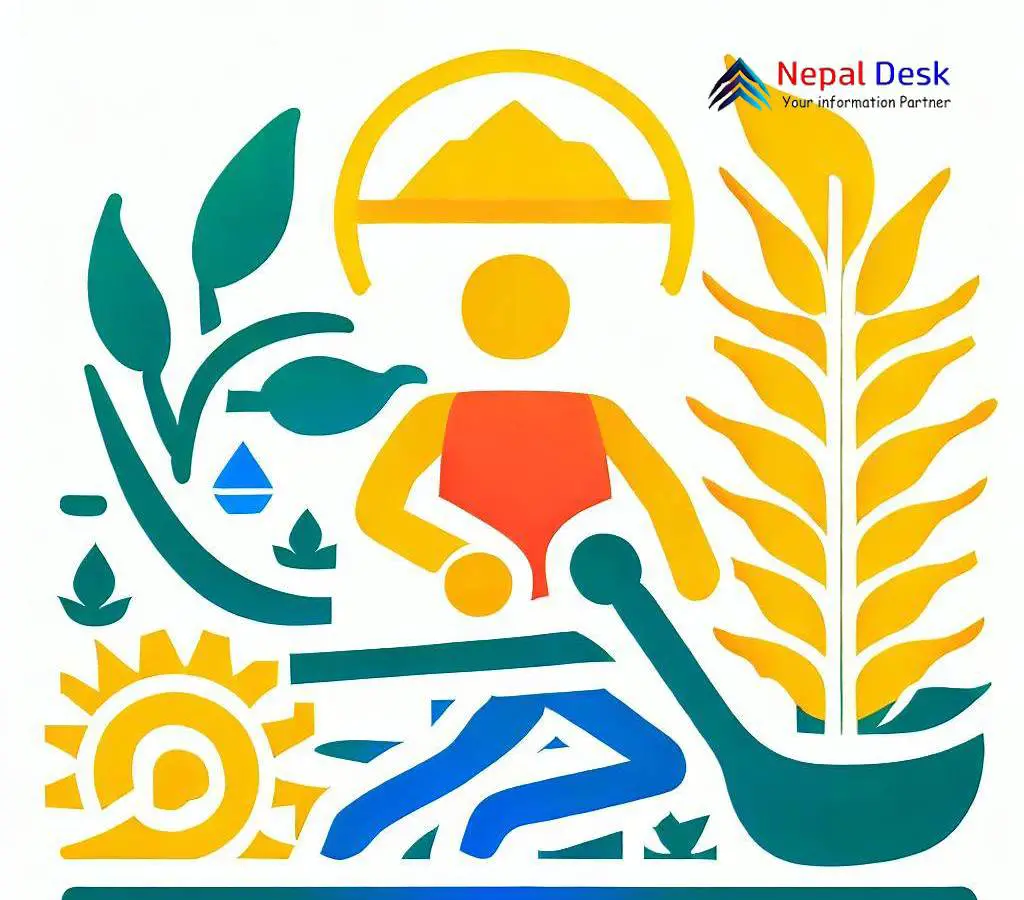Nepal's Farming Mystery: Unraveling the Agri-Census Enigma
Published Date

Published Date
Surprising shifts in Nepal's 7th Agri-Census raise eyebrows. Explore the intriguing data and the urgent push for transparency in the farming sector.
⏱ 5 min read
The National Statistics Department unveiled the findings of the 7th National Agricultural Census. This comprehensive study, the first of its kind since the country adopted federalism, was carried out to equip all three tiers of government with essential agricultural data.
Spanning across all 77 districts of Nepal, the census began on 1st Chaitra, 2078, and concluded on 19th Jestha, 2079. To ensure accuracy and depth, the study employed scientific methods, selecting 300,112 farming households for in-depth data collection. This massive undertaking involved approximately 7,200 personnel, including 5,150 enumerators, 1,350 supervisors, and 77 dedicated agricultural census officers.
The data paints a vivid picture of Nepal's agricultural sector. Currently, 4,130,789 farming families cultivate a vast expanse of 2,218,410 hectares. This marks a shift from the previous census in 2068, which recorded 3,831,093 families farming on 2,525,639 hectares. Interestingly, while the 2078 census indicates that 62% of Nepali households are engaged in farming, the 2068 census had this figure at 71%.
Another intriguing find is the number of land plots under farming households. The current census reports 11,583,950 plots, averaging 2.8 plots per family. In contrast, the 2068 data showed a slightly higher average of 3.2 plots, totaling 12,096,417.
Irrigation, a critical aspect of farming, has seen growth. The latest data reveals that 54.5% of the cultivated land, or 1,209,265.5 hectares, benefits from irrigation facilities. This is a slight increase from the 52% recorded in the 2068 census. Furthermore, 70% of farming families now have access to irrigation, up from the previous 65%.
The recent findings from the 7th National Agricultural Census indicate a puzzling trend: while the percentage of the population identifying as farmers has decreased from 71% to 62%, the actual number of farmers has increased. This observation raises questions about the underlying factors driving this change.
Potential Explanations Behind the Unexpected Trends of the 7th National Agricultural Census
One plausible explanation for this trend could be the influence of government incentives over the past half-decade. The Nepali government has introduced a range of subsidies and subsidized loan programs aimed at supporting the agricultural sector. Such incentives can have unintended consequences on data if not monitored or implemented carefully.
Multiple Benefits for Single Households:
It's conceivable that households, aiming to maximize the benefits from government programs, might register multiple members as individual farmers. This would artificially inflate the number of farmers without a corresponding increase in the actual farming population percentage.
Subsidized Loan Programs:
Subsidized loan programs, if not stringently regulated, can lead to individuals registering as farmers to avail of these loans, even if farming is not their primary occupation. This could result in an increase in the number of 'farmers' without a genuine increase in farming activity.
Land Fragmentation:
The data indicates a decrease in the average number of plots per farming family. This could suggest that land is being divided and registered under multiple family members to avail more benefits. Smaller plots might be registered under different family members, each claiming to be individual farmers.
Economic Incentives:
In economies where farming might not be the most lucrative profession, government subsidies can act as a significant pull factor. The economic benefits provided by the government might be making farming, at least on paper, more attractive.
Insights and Perspectives on the 7th National Agricultural Census Findings
While the government's intention to support the agricultural sector is commendable, it's crucial to ensure that such programs achieve their intended purpose and don't inadvertently encourage data manipulation. The observed increase in the number of farmers, against the backdrop of decreasing farming population percentage, suggests that there might be external factors, like government incentives, influencing these numbers.
For a more accurate representation, it might be beneficial to cross-reference this data with other indicators, such as agricultural output, land productivity, and loan repayment rates. This would provide a more holistic view of the situation and help in discerning genuine growth in the agricultural sector from mere statistical anomalies.
While the data does hint at possible discrepancies due to government incentives, more in-depth analysis and cross-referencing with other datasets are essential to draw definitive conclusions.
The recent discoveries in our National Agricultural Census have caught our attention and ignited crucial discussions. Our farmers, who are the very foundation of Nepal, have a right to know how and where their agricultural benefits are being allocated. It isn't just about statistics and facts; it's about building trust and making sure every dedicated farmer feels appreciated and supported.
Every farmer should have effortless access to the records featuring the benefits they're entitled to receive. This would instill confidence and faith in the system. That's why there is an increasing demand for the government to disclose comprehensive records of all benefits given to farmers.
However, there's another aspect to consider: subsidized loans. Banks hold a key role in this matter, and being transparent about who gets these loans is crucial. Local governments are responsible for ensuring banks reveal detailed information regarding the beneficiaries. The ultimate goal is to confirm that the proper assistance gets into the right hands.
Moreover, the Nepal Rastra Bank has a vital function in this process. By directing banks to keep and share their portfolios, categorized by branch and municipality, we can guarantee a more transparent flow of financial resources.
A joint effort is needed now more than ever. The Government, Nepal Rastra Bank, and all involved parties must join forces for our farmers. By promoting transparency, we can pave the way for a brighter and more stable future for agriculture in Nepal.
